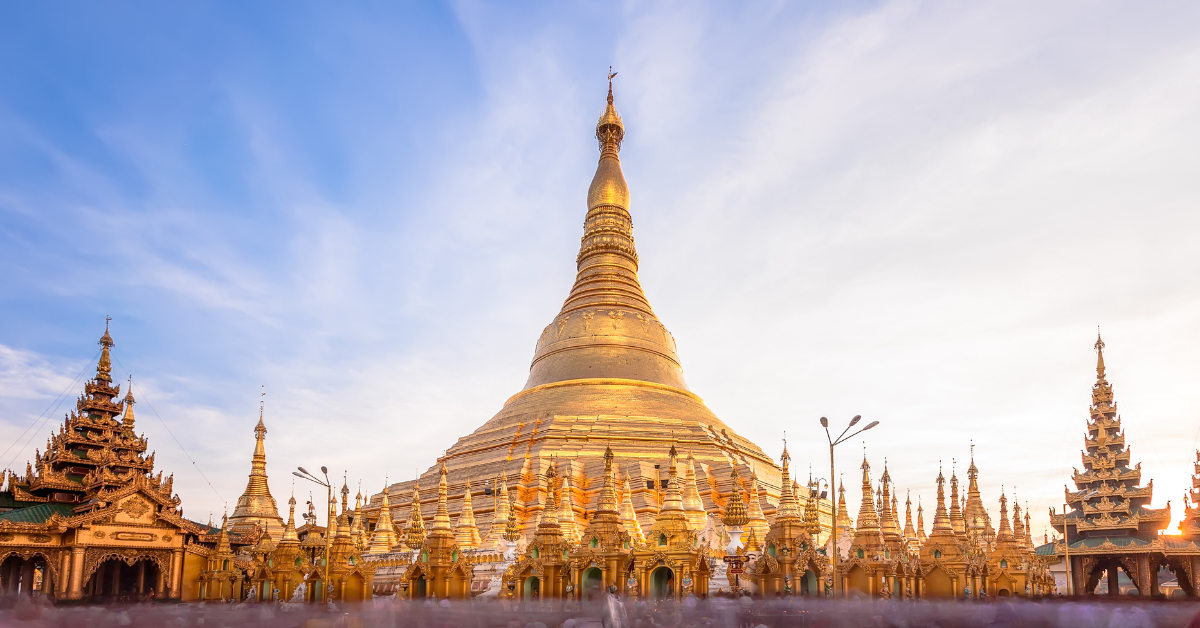In modern Japanese, Myanmar is usually written in katakana, but in historical records and official documents, the Chinese characters “緬甸” are often used. This form originates from a Chinese transliteration and is deeply tied to Japan’s history of diplomacy and journalism.
The Origin of the Term “緬甸”
The characters “緬甸” come from the Chinese transliteration of Myanmar. In Chinese, there has long been a practice of replacing the names of neighboring countries with characters that match either the sound or meaning of the original name, and Myanmar is one such example. “緬” means long or slender, and “甸” means a remote area far from the capital. Combined, they referred to a country located far to the southwest of China, on its frontier.
Later, as modern Japan adopted Chinese place names in diplomacy and newspaper articles, this form entered Japanese usage. From the Meiji era to the early Showa era, official documents and diplomatic records frequently used “緬甸,” especially in contexts related to international relations.
Table 1: Meanings of the Characters in “緬甸”
| Character | Reading | Meaning |
|---|---|---|
| 緬 | men | Long, slender, distant place |
| 甸 | ten | Remote area from the capital |
| 緬甸 | menten | A country on China’s southwestern frontier – Myanmar |
Why the Chinese Characters Remained in Japanese
The adoption of Chinese characters in Japanese was influenced by diplomatic, military, and journalistic history. From the late 19th to early 20th century, Japan obtained much of its geographical information about Southeast Asia through China. As a result, the characters already used in Chinese—“緬甸”—were naturally adopted into Japanese official terminology.
In newspapers, atlases, and geography textbooks, character-based names were considered easier to understand than alphabetic forms at the time. Moreover, in Japanese, the widespread use of katakana for foreign words only became common after World War II; before that, writing in Chinese characters was seen as a more formal and prestigious expression.
Table 2: Examples of Foreign Country Names in Chinese Characters in Japanese (Meiji–Early Showa)
| Modern Country | Historical Character Form | Reading |
|---|---|---|
| Myanmar | 緬甸 | menten |
| Thailand | 暹羅 | shamu |
| Cambodia | 柬埔寨 | kanbojia |
| Philippines | 比律賓 | firipin |
How “緬甸” is Used in Modern Japan
Today, “ミャンマー” in katakana overwhelmingly dominates everyday usage. However, in certain official documents, historical records, and geopolitical analyses, “緬甸” is still employed. In particular, it holds significance in academic papers, maps, and historical texts on international relations.
For example, in university courses on Southeast Asian history, “緬甸” and “Burma” may be discussed to explain the changes in the country’s name from the colonial period to the present. Old maps and pre-war diplomatic documents also frequently use “緬甸.”
Table 3: Modern Examples of “緬甸” Usage
| Field | Example of Use |
|---|---|
| Academia | History, Southeast Asian Studies papers |
| Government | Ministry of Foreign Affairs, Geospatial Authority materials |
| Media | Historical features, geopolitical analysis |
| Education | University geography and history textbooks |
Relationship Between “ミャンマー” and “ビルマ”
“緬甸” refers to the same country as Burma in English and the current Myanmar, but each is tied to a specific time period and political context. “Burma” is the colonial-era name, while “Myanmar” has been the official name since 1989.
In Japan, even after the name change, “Burma” remains in some political contexts, and the characters “緬甸” are sometimes used historically to encompass both names.
Table 4: Comparison of “緬甸,” “Burma,” and “Myanmar”
| Form | Period Used | Main Usage Context |
|---|---|---|
| 緬甸 | Meiji–Present | Historical sources, official documents, academia |
| ビルマ | Colonial–Present | Historical narratives, some political terminology |
| ミャンマー | 1989–Present | Official international name, everyday conversation |
The Cultural Significance of the Chinese Characters
The term “緬甸” is not just a substitution for a country name; it is a historical legacy in Japanese that links to Chinese culture. Such Chinese-character place names for foreign lands serve as cultural clues to how Japan once perceived the world and received information.
Chinese-character forms also convey meaning visually, evoking geographical images or historical contexts simply through the written form. Before katakana became the dominant form for foreign names, such characters were an essential tool for educated readers to understand global geography.
Conclusion
In Japanese, “緬甸” is a Chinese transliteration that entered the language through Meiji-era diplomacy and journalism. It continues to live on in official documents and historical research. Understanding the meaning and historical background of these characters deepens one’s appreciation of the Japanese language. While rarely used in everyday conversation, it remains an essential term for studying history and geography.






